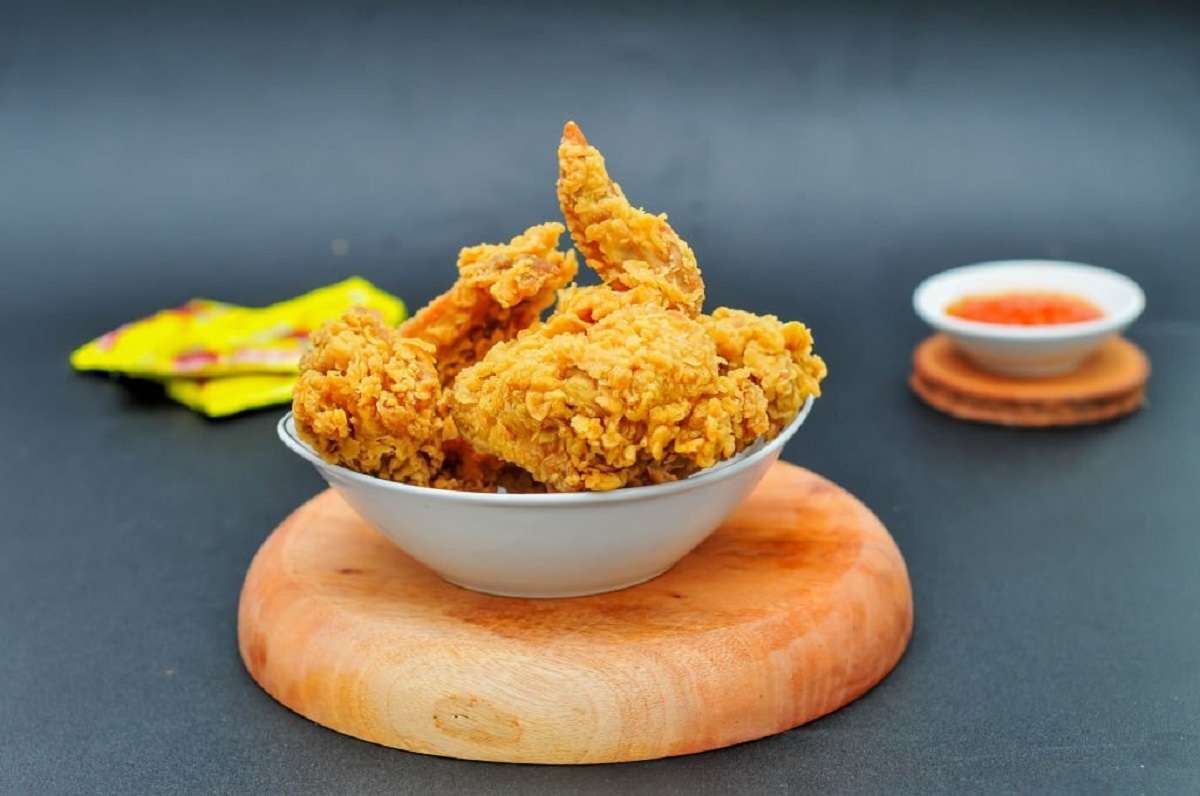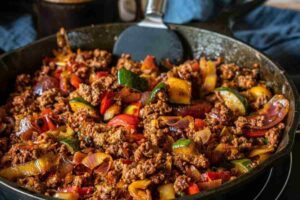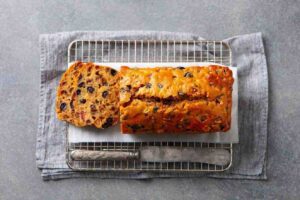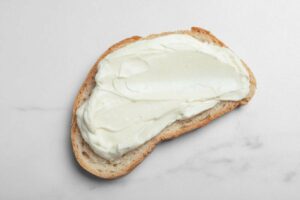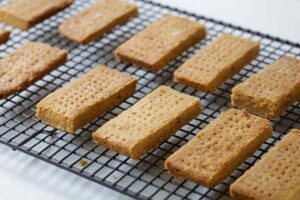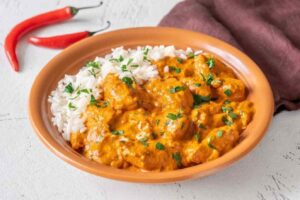Welcome to the wonderful world of perfect fried chicken! Crispy golden exteriors meet juicy and flavorful meat for a culinary delight that has captured hearts and taste buds around the world. Known for its irresistible crunch, tender succulent bites, and delectable aroma, perfect fried chicken has become an international food phenomenon and holds a special place in many hearts today.
Attaining perfect fried chicken requires striking the perfect balance between texture and flavor. Every chicken bite must burst with flavor from herbs, spices, and secret ingredients – while its coating must create a golden shell that seals in its natural juices for a moist and succulent interior.
Whatever your taste preferences maybe when it comes to creating the perfect fried chicken dish, whether that be using classic herbs or creating something truly original and custom tailored specifically to you – the possibilities are virtually limitless! From traditional Southern recipes and international variations inspired by different cultures – each rendition offers its own special charm and flavor profile.
Perfect fried chicken transcends its culinary merit; it evokes feelings of comfort, nostalgia, and togetherness. Fried chicken has long been a mainstay at family gatherings, picnics, game day feasts, and special events; just looking at an enormous platter full of golden brown pieces is enough to get people talking at the table!
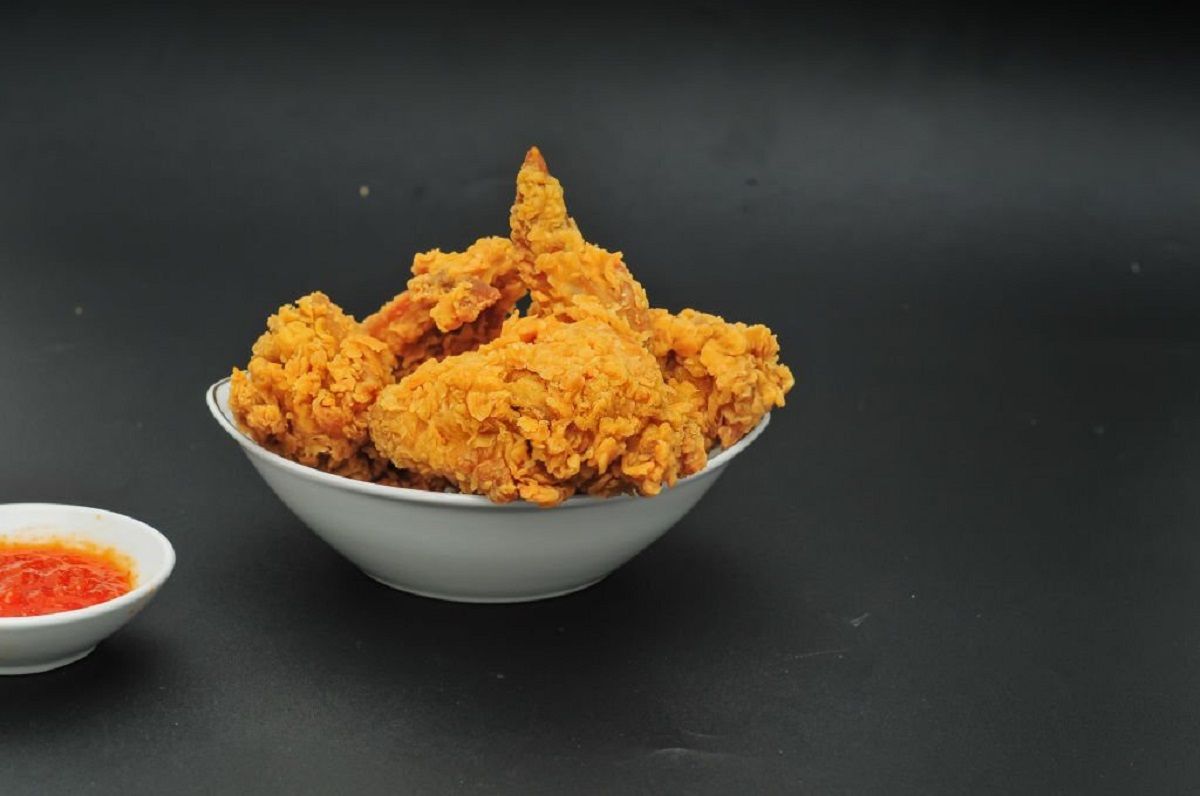
Table of contents
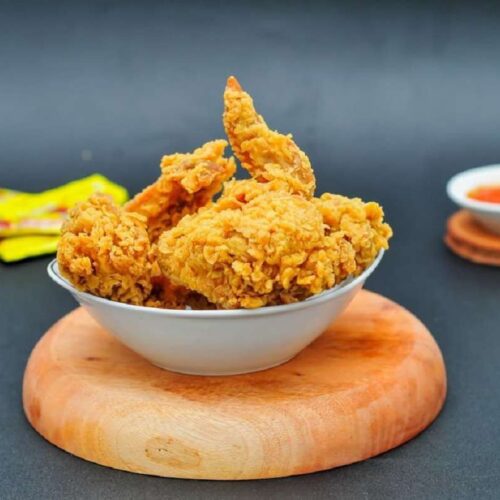
Perfect Fried Chicken
Equipment
- 1 Deep Frying Pan or Pot A sturdy and deep pan or pot is essential for frying the chicken. It should be large enough to accommodate the chicken pieces comfortably without overcrowding.
- 1 Cooking Thermometer A cooking thermometer is helpful for monitoring the temperature of the oil to ensure it reaches the optimal frying temperature of around 350-375°F (175-190°C). It is also important to check the internal temperature of the chicken to ensure it reaches 165°F (75°C) for safe consumption.
- 1 Slotted spoon These utensils will assist you in safely handling the chicken pieces when frying and transferring them to a paper towel-lined plate or wire rack to drain excess oil.
- 1 Wire Rack Having paper towels or a wire rack ready will allow you to drain the fried chicken and remove any excess oil.
Ingredients
- 6 chicken pieces
- 1 cup all-purpose flour
- 1 tbsp salt
- 1 tbsp black pepper
- 1 tbsp paprika
- 1 tbsp garlic powder
- 1 tbsp onion powder
- 1 Vegetable oil for frying
Instructions
- In a shallow bowl, combine the all-purpose flour, salt, black pepper, paprika, garlic powder, and onion powder. If desired, add any additional spices or herbs according to your preference. Mix well to ensure the spices are evenly distributed.
- Heat vegetable oil in a deep frying pan or pot. Fill it about one-third full to allow enough space for the chicken pieces and prevent oil overflow. Heat the oil to around 350-375°F (175-190°C). Use a cooking thermometer to monitor the temperature.
Video
Notes
Why achieving the perfect crispiness is important
Frying chicken is an art that requires a delicate balance of technique and ingredients. The goal is to achieve a crispy exterior while keeping the meat juicy and tender on the inside. Many factors come into play when it comes to achieving the perfect fried chicken, such as the type of chicken, the marinade, and the breading. In this section, we will explore the secrets behind achieving the perfect balance and texture in your fried chicken.
Fried chicken has been a staple in many cultures for centuries. From the Southern-style fried chicken in the United States to the karaage in Japan, people all over the world have their own unique take on this delicious dish.
The art of frying chicken involves a combination of techniques that vary depending on the desired outcome. However, the basic principles remain the same – a crispy exterior, moist and flavorful meat, and an irresistible golden brown color.
The science behind crispy fried chicken
The perfect crispiness is what sets apart of good fried chicken from great perfect fried chicken. When you take a bite of a perfectly crispy chicken, you experience a delightful crunch followed by the tender and juicy meat inside. Achieving the perfect crispiness is important because it adds a textural contrast to the dish, elevating the overall eating experience.
Nobody wants to bite into a soggy, greasy piece of chicken. The perfect crispiness not only enhances the flavor but also gives an appealing visual appeal to the dish. So, whether you’re cooking for yourself or serving guests, mastering the art of achieving the perfect crispiness is crucial for a memorable fried chicken experience.
The Best Oil for Perfect Fried Chicken A Comprehensive Guide
Fried chicken is a beloved comfort food enjoyed by people all over the world. Achieving that perfect, crispy texture and mouthwatering flavor requires not only a great recipe but also the right oil for frying. In this comprehensive guide, we will explore the best oils for frying chicken, helping you elevate your fried chicken game to new heights.
The Most Contenders Comparison of different oils
Vegetable Oil
Vegetable oil is an extremely popular option for cooking chicken because of its neutral taste as well as its high smoking point. It’s usually a blend of various plant-based oils, like corn, soybean, or canola oil. The neutral flavor of vegetable oils allows the flavor that chickens possess to be highlighted and the high smoking point makes for an extremely crispy and golden outer.
Peanut Oil
Peanut oil is an additional great choice for cooking chicken, particularly if prefer a sweet and slightly sweet taste. It has an extremely high smoke point and gives a distinctive flavor to the meat, which enhances its overall taste. But, if any member of your family has allergies to nuts, it’s crucial to look at alternative options.
Canola Oil
Canola oil is commonly utilized for commercial frying due to its cost-effectiveness and versatility. It has a light taste, which allows the chicken’s natural flavor to be a dominant factor. Because of its superior smoke points and light consistency, the canola oil is able to create a crisp and evenly cooked chicken.
Corn Oil
Corn oil, made from corn kernels is renowned for its smoke point that is high and mild flavor. It creates a crispy crust and imparts a subtle flavor to your chicken. Corn oil is an excellent option for those who prefer an astringent flavor and an appealing golden finish.

Serving Suggestions for Perfect Fried Chicken
Fried chicken is a beloved comfort food that’s crispy on the outside and tender on the inside. Whether you’re making it at home or ordering from your favorite restaurant, the way you serve fried chicken can elevate the entire dining experience.
1. Classic Fried Chicken Platter
Serve your crispy fried chicken on a platter with a side of coleslaw, mashed potatoes, and gravy. Garnish with fresh parsley or chives for a traditional Southern-style meal.
2. Chicken and Waffles
Create a delightful combination by serving fried chicken with freshly baked waffles. Drizzle maple syrup over both the chicken and waffles for a sweet and savory treat.
3. Fried Chicken Sandwich
Place a fried chicken fillet in a bun and layer it with lettuce, tomato, pickles, and your favorite sauce (mayonnaise, ranch, or hot sauce). Serve with a side of crispy fries or sweet potato fries.
4. Chicken Salad
Chop up your fried chicken and add it to a fresh garden salad with mixed greens, cherry tomatoes, cucumbers, and a vinaigrette dressing. Chicken salad with cheese salad is a delightful combination of flavors and textures that makes for a satisfying and delicious meal.
